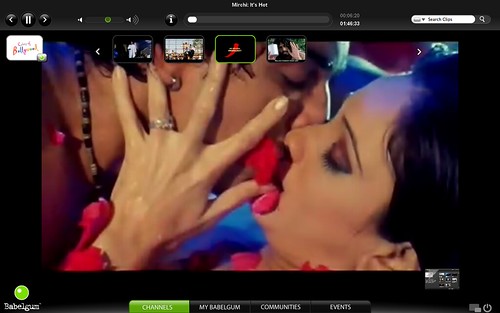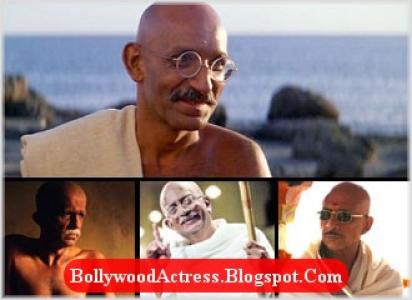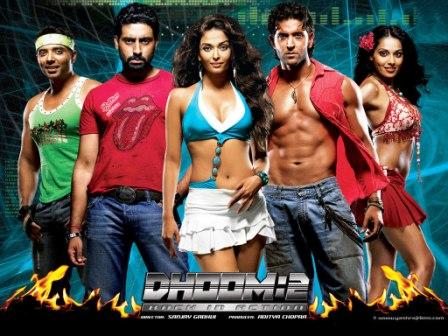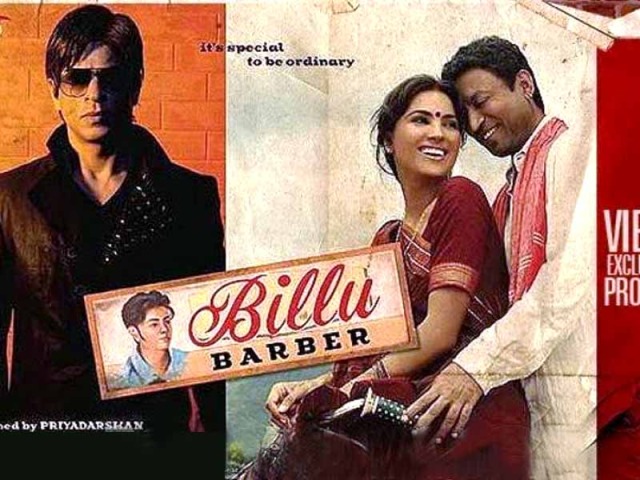The 1930s and 1940s were tumultuous times: India was buffeted by the Great Depression, World War II, the Indian independence movement, and the violence of the Partition. Most Bollywood films were unabashedly escapist, but there were also a number of filmmakers who tackled tough social issues, or used the struggle for Indian independence as a backdrop for their plots 1937, Ardeshir Irani, of Alam Ara fame, made the first colour film in Hindi, Kisan Kanya. The next year, he made another colour film, Mother India. However, colour did not become a popular feature until the late 1950s. At this time, lavish romantic musicals and melodramas were the staple fare at the cinema.
The naming scheme for "Bollywood" was inspired by "Tollywood", the name that was used to refer to the cinema of West Bengal. Dating back to 1932, "Tollywood" was the earliest Hollywood-inspired name, referring to the Bengali film industry based in Tollygunge, which rhymed with "Hollywood" and was the center of the cinema of India at the time. The name "Bollywood" later arose as the Bombay-based film industry overtook the one in Tollygunge as the center of the Indian film industry.
Bollywood is formally referred to as Hindi cinema, frequent use of poetic Urdu words is fairly common. There has been a growing presence of Indian English in dialogue and songs as well. It is common to see films that feature dialogue with English words phrases, or even whole sentences.
Bollywood film music is called filmi music (from Hindi, meaning "of films"). Songs from Bollywood movies are generally pre-recorded by professional playback singers, with the actors then lip synching the words to the song on-screen, often while dancing. While most actors, especially today, are excellent dancers, few are also singers. One notable exception was Kishore Kumar, who starred in several major films in the 1950s while also having a stellar career as a playback singer. K. L. Saigal, Suraiyya, and Noor Jehan were also known as both singers and actors. Some actors in the last thirty years have sung one or more songs themselves; for a list, see Singing actors and actresses in Indian cinema.Playback singers are prominently featured in the opening credits and have their own fans who will go to an otherwise lackluster movie just to hear their favourites. Going by the quality as well as the quantity of the songs they rendered, most notable singers of Bollywood are Lata Mangeshkar, Asha Bhosle, Geeta Dutt, Shamshad Begum and Alka Yagnik among female playback singers; and K. L. Saigal, Talat Mahmood, Mukesh, Mohammed Rafi, Manna Dey, Hemant Kumar, Kishore Kumar, Kumar Sanu, S.P.Balasubramanyam, Udit Narayan and Sonu Nigam among male playback singers. Mohammed Rafi is often considered arguably the finest of the singers that have lent their voice to Bollywood songs, followed by Lata Mangeshkar, who, through the course of a career spanning over six decades, has recorded thousands of songs for Indian movies. The composers of film music, known as music directors, are also well-known. Their songs can make or break a film and usually do. Remixing of film songs with modern beats and rhythms is a common occurrence today, and producers may even release remixed versions of some of their films' songs along with the films' regular soundtrack albums.
The dancing in Bollywood films, especially older ones, is primarily modelled on Indian dance: classical dance styles, dances of historic northern Indian courtesans (tawaif), or folk dances. In modern films, Indian dance elements often blend with Western dance styles (as seen on MTV or in Broadway musicals), though it is usual to see Western pop and pure classical dance numbers side by side in the same film. The hero or heroine will often perform with a troupe of supporting dancers. Many song-and-dance routines in Indian films feature unrealistically instantaneous shifts of location or changes of costume between verses of a song. If the hero and heroine dance and sing a duet, it is often staged in beautiful natural surroundings or architecturally grand settings. This staging is referred to as a "picturisation".Bollywood films are mostly musicals, and are expected to contain catchy music in the form of song-and-dance numbers woven into the script. A film's success often depends on the quality of such musical numbers. Indeed, a film's music is often released before the movie itself and helps increase the audience.
Indian audiences expect full value for their money, with a good entertainer generally referred to as paisa vasool, (literally, "money's worth and dances, love triangles, comedy and dare-devil thrills are all mixed up in a three-hour-long extravaganza with an intermission. Such movies are called masala films, after the Hindi word for a spice mixture. Like masalas, these movies are a mixture of many things such as action, comedy, romance etc. Most films have heroes who are able to fight off villains all by themselves.Melodrama and romance are common ingredients to Bollywood films. Pictured Achhut Kanya (1936)
Bollywood plots have tended to be melodramatic. They frequently employ formulaic ingredients such as star-crossed lovers and angry parents, love triangles, family ties, sacrifice, corrupt politicians, kidnappers, conniving villains, courtesans with hearts of gold, long-lost relatives and siblings separated by fate, dramatic reversals of fortune, and convenient coincidences.
There have always been Indian films with more artistic aims and more sophisticated stories, both inside and outside the Bollywood tradition (see Parallel Cinema). They often lost out at the box office to movies with more mass appeal. Bollywood conventions are changing, however. A large Indian diaspora in English speaking countries, and increased Western influence at home, have nudged Bollywood films closer to Hollywood models.
Film critic Lata Khubchandani writes,"..our earliest films...had liberal doses of sex and kissing scenes in them. Strangely, it was after Independence the censor board came into being and so did all the strictures. Plots now tend to feature Westernised urbanites dating and dancing in clubs rather than centering on pre-arranged marriages. Though these changes can widely be seen in contemporary Bollywood, traditional conservative ways of Indian culture continue to exist in India outside the industry and an element of resistance by some to western-based influences.[53] Despite this, Bollywood continues to play a major role in fashion in India some studies into fashion in India have revealed that some people are unaware that the changing nature of fashion in Bollywood films which are presented to them are often influenced by globalisation and many consider the clothes worn by Bollywood actors as authentically Indian.
 bollywood
bollywood bollywood
bollywood bollywood
bollywood bollywood
bollywood bollywood
bollywood bollywood
bollywood bollywood
bollywood bollywood
bollywood bollywood
bollywood bollywood
bollywood bollywood
bollywood bollywood
bollywood bollywood
bollywood bollywood
bollywood bollywood
bollywood bollywood
bollywood bollywood
bollywood bollywood
bollywood bollywood
bollywood bollywood
bollywood bollywood
bollywood









No comments:
Post a Comment